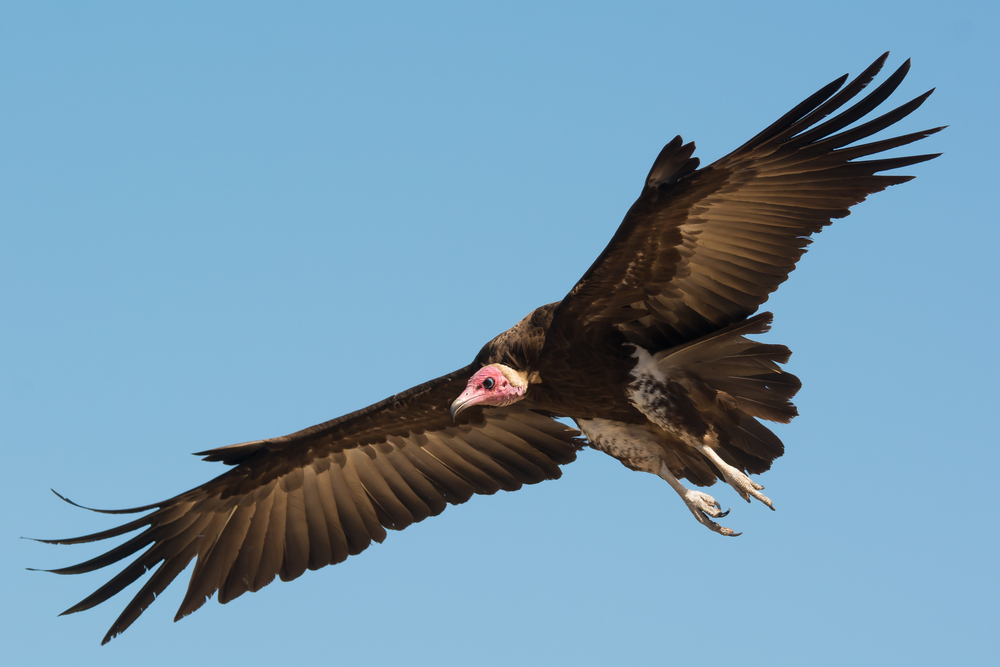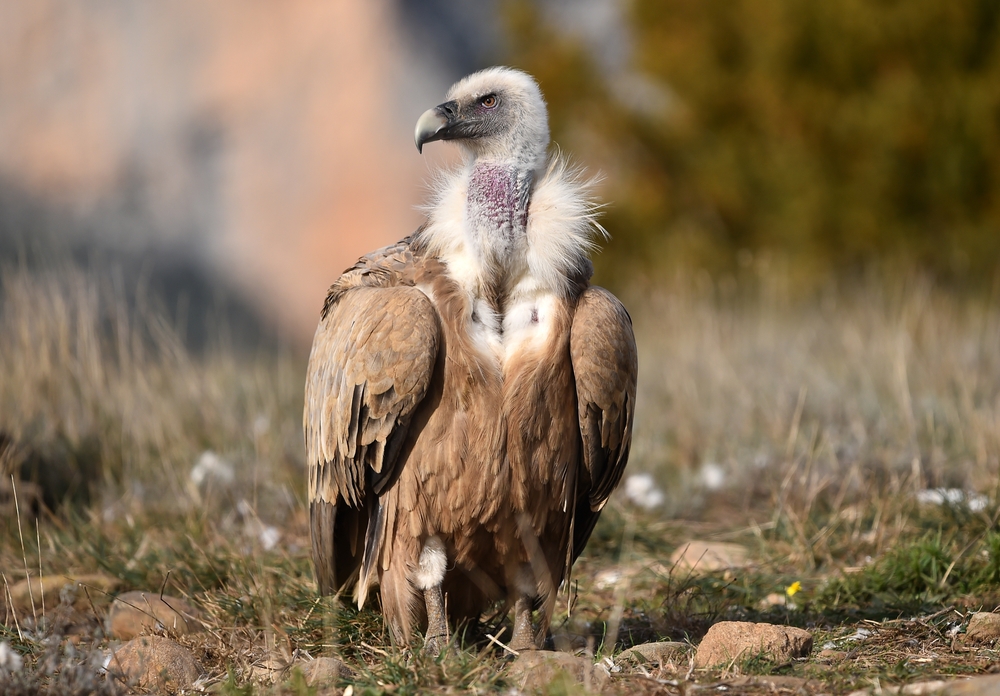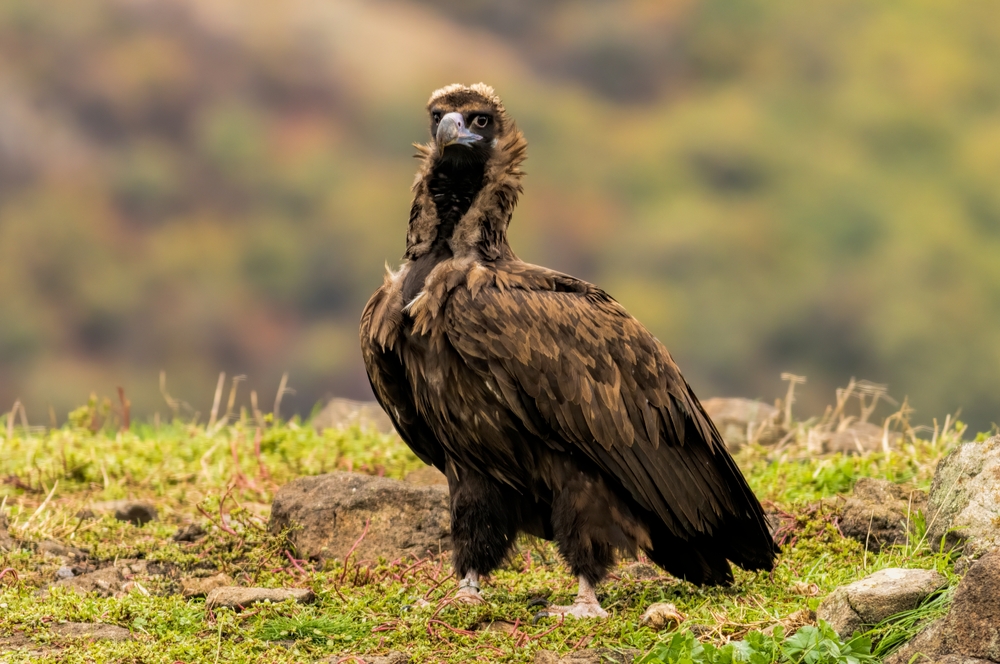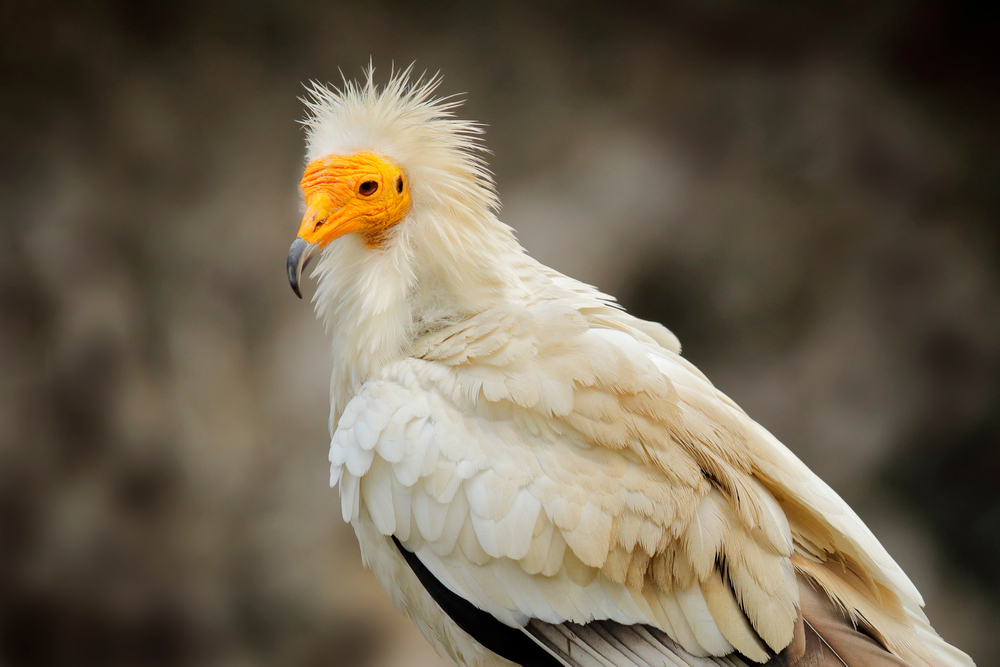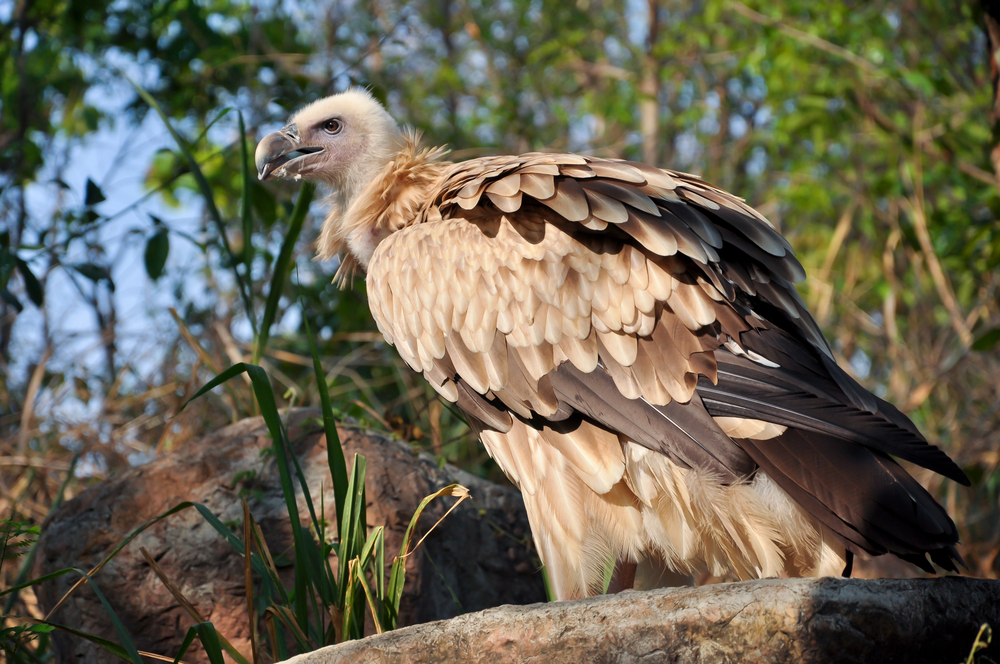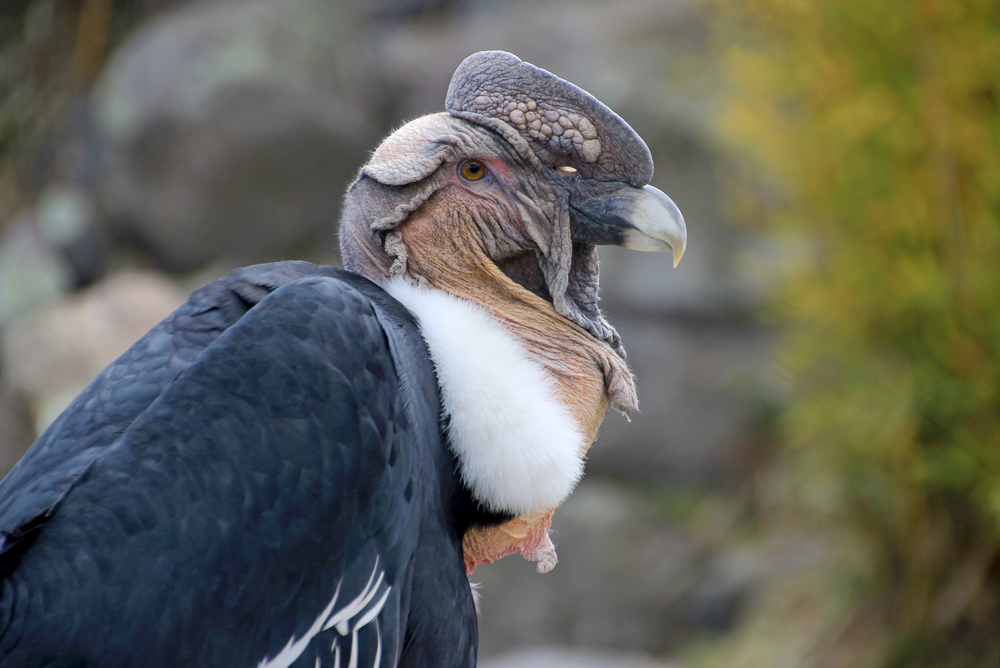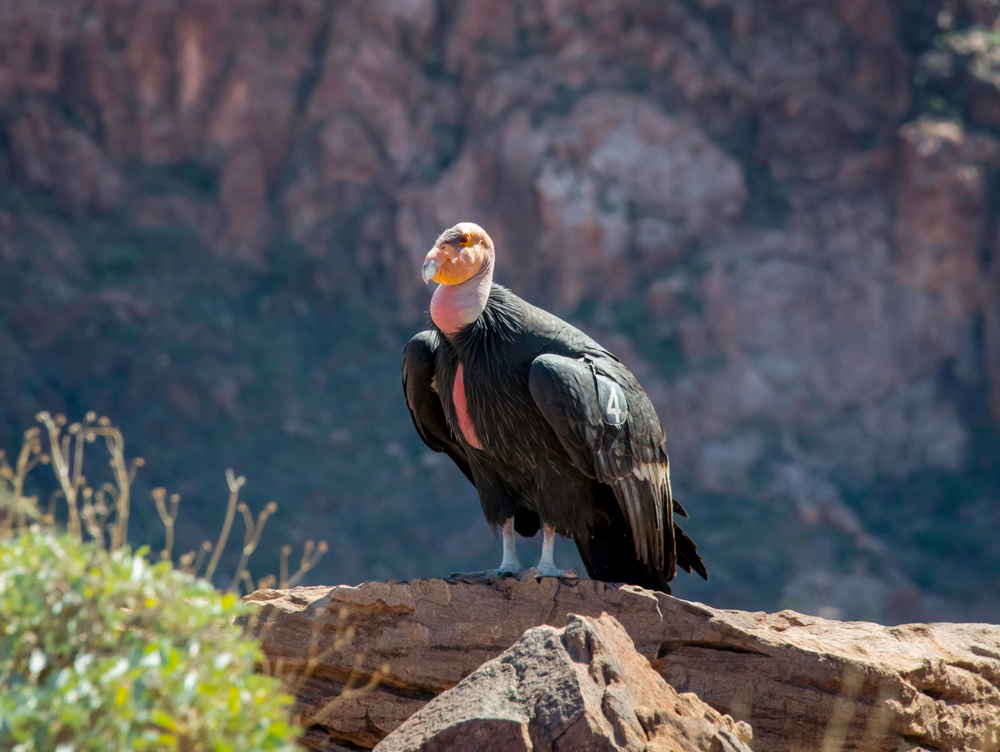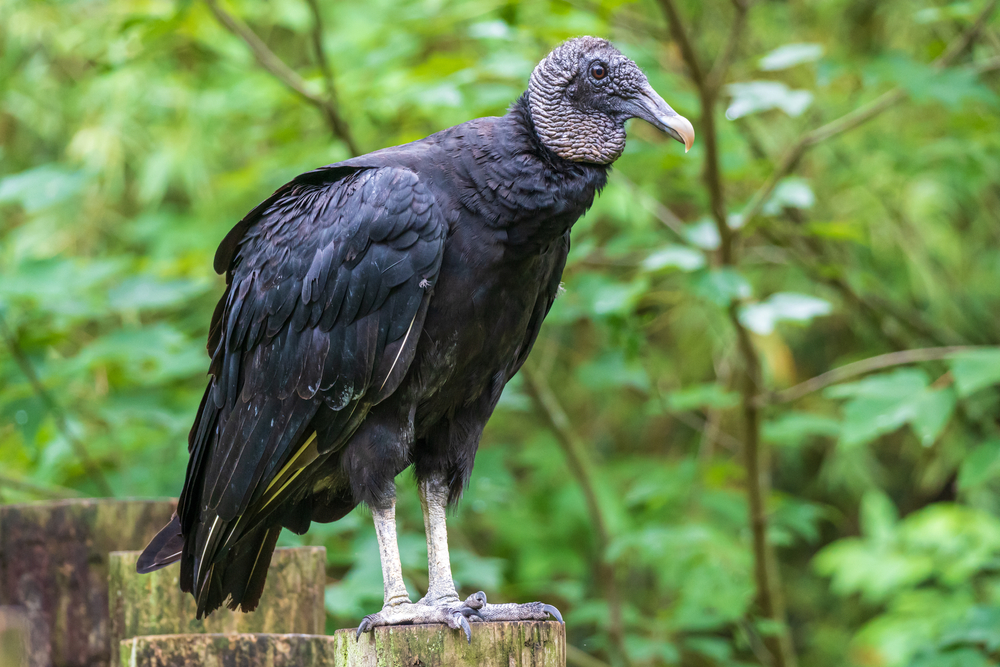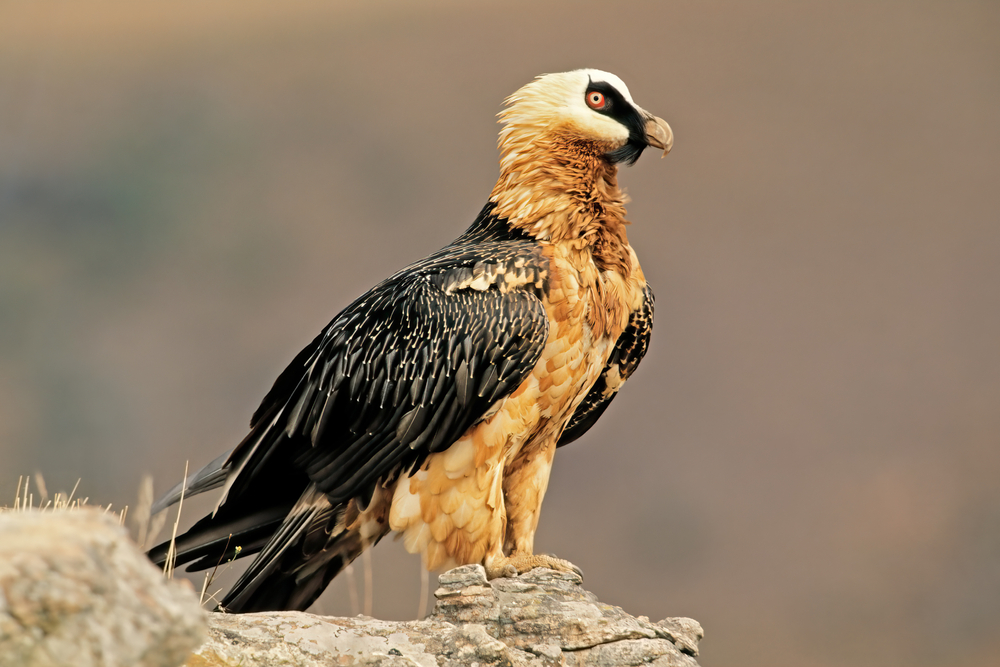The Hooded Vulture (Necrosyrtes monachus) is most closely related to the White-headed Vulture (Trigonoceps occipitalis), with both belonging to the African vulture lineage that diverged from the larger Gyps vultures.
About
The Hooded Vulture (Necrosyrtes monachus), a member of the Accipitridae family, is a small Old World vulture native to sub-Saharan Africa. Unlike its larger relatives, the Hooded Vulture is slight in build and often seen scavenging close to human settlements, where it plays a vital role in cleaning up waste and carrion.
Measuring 62–72 cm (24–28 in) in length with a wingspan of 155–170 cm (61–67 in), this species is noticeably smaller than most vultures. Its plumage is generally dark brown, while its bare head is pinkish with a thin, down-curved bill well suited for picking small scraps. A pale, feathered “hood” around the neck gives the species its name. Agile and lightweight, it is adept at moving in and out of feeding sites where larger vultures dominate.
The Hooded Vulture feeds on a wide range of food, from carrion and animal remains to insects, fish, and even scraps from markets or slaughterhouses. Its adaptability allows it to thrive in urban as well as rural environments, making it one of the more human-tolerant vultures. This close association with people, however, also exposes it to poisoning, persecution, and disease.
Breeding occurs in trees, where pairs construct stick nests lined with softer materials. Typically, only one egg is laid, with both parents sharing incubation and chick-rearing responsibilities. The fledging process takes several months, and the young remain dependent for some time after leaving the nest.
Once common across Africa, the Hooded Vulture has suffered severe population declines, primarily due to poisoning (often linked to poached carcasses), habitat loss, and hunting for bushmeat or traditional medicine. It is now listed as Critically Endangered. Conservation programs focus on reducing poisoning, raising awareness, and protecting nesting habitats to ensure the survival of this important scavenger.
Physical Characteristics
The Hooded Vulture (Necrosyrtes monachus) is one of the smallest and most distinctive Old World vultures, easily recognized by its slender frame and bare, hooded head.
Plumage:
-
Adults: Dark brown overall, sometimes appearing blackish in bright light. The feathers are looser around the neck, giving a “hooded” appearance.
-
Juveniles: Slightly lighter brown than adults, with less contrast and a less pronounced hood.
Head and Face:
The head is small and bare, with pink to reddish skin that can flush brighter during feeding or breeding. The thin, elongated bill is relatively slender compared to larger vultures, adapted for precision feeding on scraps and small carcass parts.
Body and Wings:
A slim, lightly built body with long wings that appear narrow compared to bulkier vulture species. In flight, the wings show pale underwing coverts contrasting with darker flight feathers.
Tail:
The tail is short and square, helping with agile maneuvers during low soaring and urban foraging.
Size:
-
Length: 24–28 in (62–72 cm)
-
Wingspan: 5.0–5.6 ft (1.5–1.7 m)
-
Height at Rest: About 1.6–2.0 ft (50–60 cm)
Weight:
-
Adults: 4.4–6.6 lbs (2–3 kg)
The Hooded Vulture’s small size, pink bare head, and dark plumage make it easily recognizable. Adapted for life near humans as well as in savannas, it is often seen perched near villages, abattoirs, and refuse dumps.
Reproduction
The Hooded Vulture (Necrosyrtes monachus) follows a relatively slow reproductive cycle, producing only one chick per year with extended parental care.
1. Mating and Courtship:
Pairs are generally monogamous and maintain long-term bonds. Courtship involves aerial displays, chasing flights, and mutual preening.
2. Nesting Sites:
They build nests in trees, often tall and isolated ones in savannas, woodlands, or near villages. Less frequently, nests may be found on cliffs or man-made structures. Nests are large platforms of sticks lined with softer materials like grass or hides.
3. Egg Laying:
The female lays a single egg per clutch, typically during the dry season (varies across Africa, but often between November and April). The egg is whitish with light speckling.
4. Incubation:
Incubation lasts about 46–54 days, shared by both parents, though the female usually takes the longer shifts.
5. Hatching and Care of Chicks:
The chick hatches with white down and is entirely dependent on the parents. Both male and female feed it by regurgitation.
6. Fledging and Independence:
Young fledge at around 95–125 days, depending on food availability and conditions, but may remain dependent for several more weeks.
7. Breeding Frequency:
Hooded Vultures typically breed once per year, but only if food resources are stable enough to support chick survival.
The Hooded Vulture’s reliance on single-chick broods and slow development makes stable food sources and nesting habitats essential for sustaining populations, particularly as they face steep declines across Africa.
Lifespan
The Hooded Vulture (Necrosyrtes monachus) is a relatively long-lived species for its small size, though it faces high risks due to human pressures across Africa.
Lifespan in the Wild:
In the wild, Hooded Vultures typically live 20–25 years, though some individuals may reach 30 years if they avoid major threats. Juvenile mortality is high due to predation, food shortages, and poisoning.
Lifespan in Captivity:
In captivity, with consistent food and veterinary care, they can live up to 35–40 years, significantly longer than in the wild.
Threats to the Hooded Vulture:
-
Poisoning: One of the leading causes of death, often from poisoned carcasses meant for lions, hyenas, or stray dogs.
-
Traditional Medicine Trade: Killed in large numbers for use in belief-based medicine in parts of West and Central Africa.
-
Food Shortages: Declines in livestock and changes in waste management reduce carrion availability near villages.
-
Electrocution and Collisions: Risks from power lines and expanding infrastructure.
-
Habitat Disturbance: Loss of nesting trees in savannas and woodlands due to logging and agriculture.
Although the Hooded Vulture has the potential to live for decades, its populations are declining rapidly, and it is now listed as Critically Endangered. Conservation efforts to reduce poisoning and protect nesting habitats are critical for its survival.
Eating Habits
The Hooded Vulture (Necrosyrtes monachus) is one of the most adaptable and opportunistic scavengers in Africa, thriving in both wild and human-influenced environments.
Diet:
-
Carrion: Feeds on carcasses of domestic livestock, wild ungulates, and small animals.
-
Scraps & Waste: Often forages at garbage dumps, abattoirs, and slaughterhouses near towns and villages.
-
Insects & Invertebrates: Actively searches for termites, grasshoppers, and beetles, sometimes following plows to catch disturbed insects.
-
Eggs & Small Prey: Occasionally takes bird eggs, reptiles, and small mammals.
Hunting Strategy:
-
Scavenging: Locates food visually, often soaring low over savannas, villages, and roads.
-
Precision Feeding: With its slender beak, it can reach scraps and tissue that larger vultures cannot access.
-
Urban Foraging: Known as the “village vulture,” it often scavenges in human settlements, benefiting from food waste.
Feeding Behavior:
-
Usually one of the first vultures to arrive at a carcass, but it defers to larger species in feeding order.
-
Often feeds at the edges of carcasses or picks at scraps left behind.
-
Highly social around human areas, sometimes gathering in flocks of dozens near food-rich sites.
Success and Adaptability:
The Hooded Vulture’s small size, slender bill, and willingness to exploit human environments make it one of the most adaptable vultures in Africa. However, its reliance on human-provided food has also made it highly vulnerable to poisoning and persecution.
Uniqueness
The Hooded Vulture (Necrosyrtes monachus) is one of Africa’s most distinctive and unusual scavengers, standing apart from larger and more dominant vulture species.
Smallest of the African Vultures:
At just 4.4–6.6 lbs (2–3 kg), it is the smallest of Africa’s vultures, allowing it to access scraps that bulkier vultures cannot.
Slender Bill Adaptation:
Its thin, elongated bill is specialized for precision feeding, enabling it to pick at small scraps, skin, and muscle fibers left behind after larger vultures have fed.
The “Village Vulture”:
Uniquely adapted to human settlements, the Hooded Vulture thrives around towns, markets, abattoirs, and garbage dumps, a behavior uncommon in other vultures.
Hooded Appearance:
Its small, bare head with pinkish skin and loose feathers gives it a “hooded” look, making it instantly recognizable among African vultures.
Insect Hunter:
Unlike most vultures, it frequently feeds on insects and invertebrates, sometimes following plows or grazing animals to catch disturbed prey.
Critical Conservation Status:
Once common and widespread, it has suffered catastrophic population declines due to poisoning and the wildlife trade, now listed as Critically Endangered by the IUCN.
The Hooded Vulture’s small size, adaptability to human environments, and specialized feeding habits make it one of the most unique vultures on the African continent.
Be the First to Share Photos of This Species.
FAQ’s
1. What species is closest to the Hooded Vulture?
2. How does the Hooded Vulture compare to other vultures?
The Hooded Vulture is much smaller and lighter than most vultures, weighing only about 2–3 kg. While Cinereous and Griffon Vultures dominate carcasses, the Hooded Vulture excels at precision feeding on scraps, insects, and waste, making it more versatile but less dominant.
3. What national parks provide the best opportunity to see a Hooded Vulture?
What national parks provide the best opportunity to see a Hooded Vulture?
-
Kruger National Park (South Africa): Commonly seen around settlements and roads.
-
Serengeti National Park (Tanzania): Frequently observed at carcasses alongside larger vultures.
-
Etosha National Park (Namibia): Seen both at waterholes and near villages.
-
Niokolo-Koba National Park (Senegal): A stronghold in West Africa.
-
Chobe National Park (Botswana): Often spotted near riverbanks and in savanna habitats.



































































